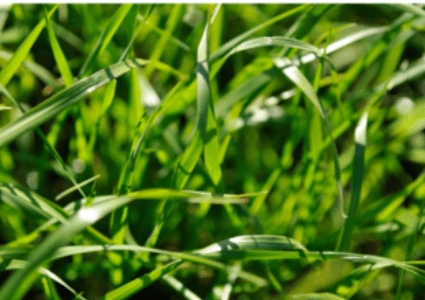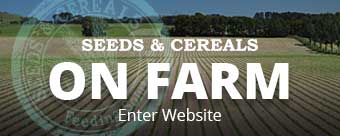Description
RAGT GREENLY ll
RAGT Greenly new generation cocksfoot not like varieties of old
Cocksfoot as a species has been considered a persistent option that tolerates dry conditions and insects for a long time, however many farmers noted a lack of palatability with the old varieties. Plant breeders, for many years were also focused on developing prostrate, low yielding types which demonstrated persistence but little else.
New generation cocksfoot is a much different plant to the cocksfoots of old.
“The key breeding focuses of SF Greenly were to offer longevity and production coupled with palatability. Leaf softness and digestibility were important considerations to help achieve this. While cocksfoot has often been seen as an option in low input environments the new generation types such as RAGT Greenly are very well suited to a range of environments, including high input systems. When it is supplied with the same nutrients as you have been applying to your typical perennial ryegrass pastures RAGT Greenly will impress with its quality and longevity”.
“The perceived palatability issues surrounding cocksfoot have been largely due to the cocksfoot not being supplied with sufficient nitrogen, be it artificial N as fertiliser or supplied via nitrogen fixation from a compatible legume. Selecting the correct legume companion species to be included with cocksfoot is necessary to help achieve its maximum potential, as this will be more economic than applying large amounts of nitrogen fertiliser. A particularly good pasture option is cocksfoot and subterranean clover mix. A new option this autumn is the recently released RAGT Rosabrook, a high yielding, late flowering variety. It has been specifically developed to tolerate the devastating clover pest; Red Legged Earth Mite (RLEM) which is now present in areas of New Zealand. The RAGT Rosabrook sub clover adds nitrogen to the system which is taken up by the cocksfoot, helping it stay healthy, green and therefore palatable. RAGT Rosabrook sub clover is compatible in its growth habits to cocksfoot, unlike white clover which can often be dominated by the grass component. Another option that is successfully being utilised is using RAGT lucerne instead of sub clover in mixes with cocksfoot where the pH is suitable” says James.
There are some important considerations when considering a cocksfoot based pasture this autumn, James explains a few key tips; “if you are embarking on a cocksfoot based pasture mix, ensure the ground is prepared early, left in a fallow state, which will retain moisture that will be available at sowing to suit the species being established. As with any perennial species, it is important to sow into ideal conditions at the correct time. Cocksfoot sown too late will be much slower than perennial ryegrass, allowing weed invasion and insufficient legume establishment. When sowing as the main grass component, keep sowing rates higher than have been typically used in the past for older type cocksfoots. New generation varieties such as RAGT Greenly have finer leaves and less tendency to clump than older varieties. Consider 6 – 8 kg/ha of RAGT Greenly combined with 10 kg/ha of RAGT Rosabrook subterranean clover. If combining RAGT Greenly with other grass components as part of a permanent mix then sow between 1 and 3 kg/ha depending on what other grass components are used”.





